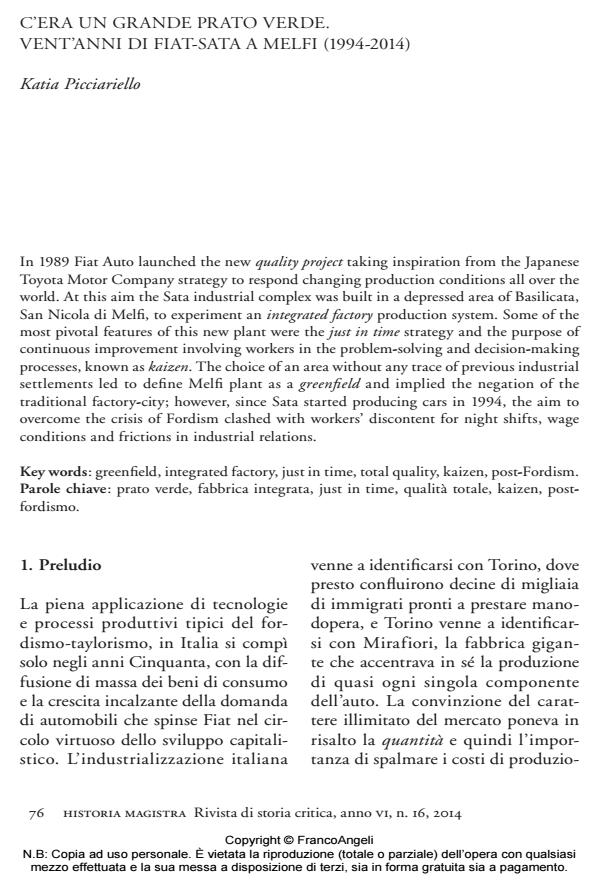C’era un grande prato verde. Vent’anni di Fiat-Sata a Melfi (1994-2014)
Journal title HISTORIA MAGISTRA
Author/s Katia Picciariello
Publishing Year 2015 Issue 2014/16
Language Italian Pages 15 P. 76-90 File size 227 KB
DOI 10.3280/HM2014-016006
DOI is like a bar code for intellectual property: to have more infomation
click here
Below, you can see the article first page
If you want to buy this article in PDF format, you can do it, following the instructions to buy download credits

FrancoAngeli is member of Publishers International Linking Association, Inc (PILA), a not-for-profit association which run the CrossRef service enabling links to and from online scholarly content.
In 1989 Fiat Auto launched the new quality project taking inspiration from the Japanese Toyota Motor Company strategy to respond changing production conditions all over the world. At this aim the Sata industrial complex was built in a depressed area of Basilicata, San Nicola di Melfi, to experiment an integrated factory production system. Some of the most pivotal features of this new plant were the just in time strategy and the purpose of continuous improvement involving workers in the problem-solving and decision-making processes, known as kaizen. The choice of an area without any trace of previous industrial settlements led to define Melfi plant as a greenfield and implied the negation of the traditional factory-city; however, since Sata started producing cars in 1994, the aim to overcome the crisis of Fordism clashed with workers’ discontent for night shifts, wage conditions and frictions in industrial relations.
Keywords: Greenfield, integrated factory, just in time, total quality, kaizen, post-Fordism.
Katia Picciariello, C’era un grande prato verde. Vent’anni di Fiat-Sata a Melfi (1994-2014) in "HISTORIA MAGISTRA" 16/2014, pp 76-90, DOI: 10.3280/HM2014-016006